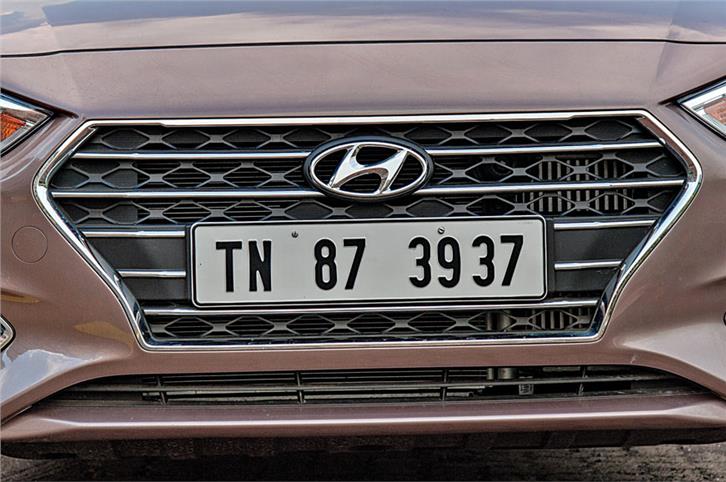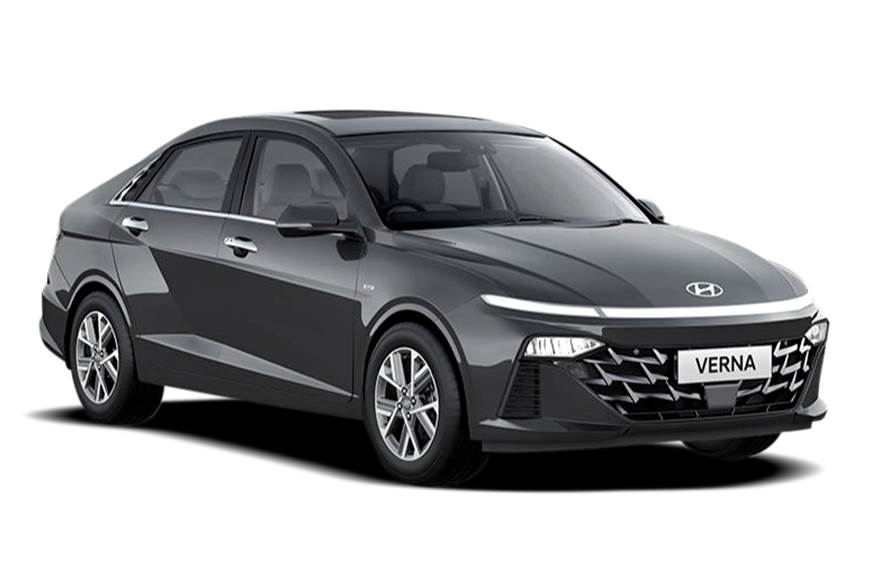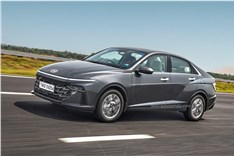2017 Hyundai Verna review, road test
We tested all versions of the latest Verna to tell you all there is to know about Hyundai’s new Honda City and Maruti Ciaz challenger.
Published on Oct 31, 2017 06:00:00 AM
1,16,370 Views
Follow us on

Top Vernas get LED DRLs, projector headlamps and cornering lamps.

Cascading grille a new-age Hyundai design element. Looks a bit big here.

Boot lid lip and ridges on bumper help reduce air flow resistance at rear.
See the new Verna in passing and chances are you’ll mistake it for the Elantra. Yes, the details are different and there is a visible difference in size too, but the Verna’s basic silhouette and design do make it appear very Elantra-like. And like the Elantra, the new Verna’s styling conforms to Hyundai’s Fluidic Sculpture 2.0 design language, so the look isn’t as flamboyant as the last-gen Verna’s, but this is a handsome car nonetheless. As on all new Hyundais, the centrepiece up front is the ‘cascading grille’ that does appear a bit large on the Verna but it helps add visual width to the car. Upswept headlamps and the shapely bumper, with chrome surrounds for the fog lamps, add distinction and definition to the front. The familiar glasshouse and neatly arced roof do link the new Verna to the last one but you won’t find any glitzy cuts or creases on the sides of this one. Rather, embellishments come in the form of chrome door handles and chrome piping at the window line. Sadly, the new Verna looks a bit ungainly when viewed from the rear three-quarter angle. The rear bumper that is shaped to aid air flow is bulky and even makes the top-spec Verna’s smart 16-inch wheels appear smaller than they are. However, the sleek tail-lamps add elegance to the look and are majestic with their LED elements lit.
Last gen to current gen, the Verna has grown 65mm in length and also sits on a 30mm longer wheelbase. Interestingly, the new Verna is identical in length and wheelbase to the Honda City. And note that the similarities to the Elantra are not just skin deep. The Elantra’s sophisticated K2 platform also forms the basis for the new Verna. Structural rigidity is significantly up on the old Verna, with 50 percent (up from 13 percent) of the body shell made from light and stiff advanced high-strength steels. The cross members have also been strengthened to increase energy absorption in the event of a side impact. Hyundai has also worked to keep outside noise where it belongs and the engine mounts have been optimised to this end – there’s an insulator in the transmission tunnel and more noise absorbing materials have been employed in the region of the doors. And while the new Verna continues with an electric power steering and the familiar independent MacPherson struts up front and a non-independent, torsion beam rear suspension layout, Hyundai has revamped the entire setup for better comfort and driving dynamics.
Copyright (c) Autocar India. All rights reserved.



.jpg&w=234&h=156&q=90&c=1)




Comments
Member Login
Personal Details
No comments yet. Be the first to comment.